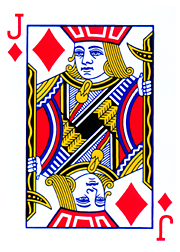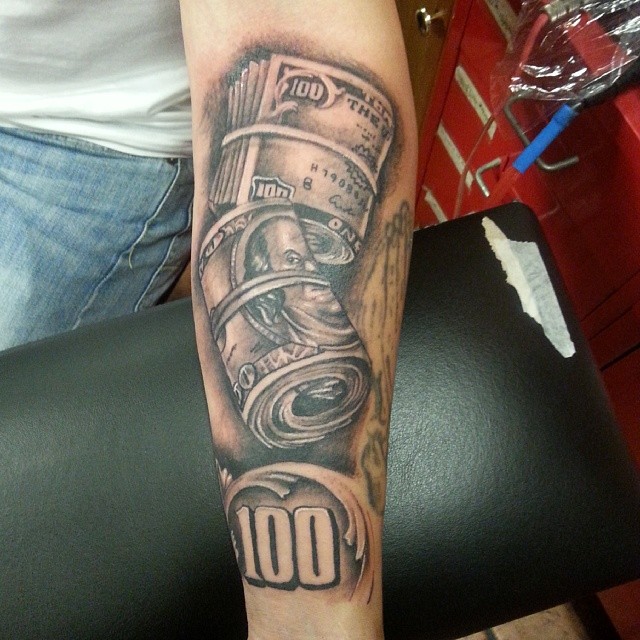Poker Notes
- Poker Quotes About Love
- Poker Notes
- How To Play Limit Holdem
- How To Take Poker Notes Jennifear
- Poker Notes Template
This feature allows you to make notes on specific players and opponents at your leisure. By clicking the note icon, you can place a color marker to any players at the table or leave a particular note to help you identify your opponents.
4 Powerful Ways to Use Player Notes Exactly Right Taking notes on the only reliable “tell” in online poker. Aside from playing the game situation and the generic. Building a library of player notes is a long-term project that varies on the size of the poker site. The time needed to. プロポーカープレーヤーの木原直哉です。 2012年WSOP5000ドル6maxPLO優勝、2013年LAPCメインイベントファイナリスト。 2019年、WSOP1500ドルディーラーズチョイスで4位。 趣味:バックギャモン、将棋、麻雀、囲碁。 ツイッター:@keypoker.
Will I be able to access my player notes using my mobile phone?

Yes. Whether you save it on your mobile phone or PC, you’ll still have access to it regardless of which device you login.
These poker notes are outstanding. I have written some poker notes myself, and can appreciate the applied knowledge he is sharing. It got me to rethink some of my moves, because we are always trying. Knowledge is Power, the more specific that knowledge is - the more powerful it is. In this episode of Project Get Me Stackin' Evan discusses proper note taki.
Are there any restrictions when making a player note?
The only restriction would be the characters of up to 1000 only
Good poker note taking is all about gaining an edge over each opponent you encounter. Catching mistakes and tendencies and taking note of them will allow you to fully exploit your opponent’s play in the future. This is poker in a nutshell: Observe >> Think >> Adjust >> Win
Take note of your possible edges. Ask questions like: Where’s my edge vs Villain? What mistakes is he prone to making? How can I extract the max value from him?
Take note of loose and spewy plays, along with tight and competent actions. What do they 3bet with? Do they 3bet in bad or good spots? Do they cold-call 2bets or 3bets with wide or tight ranges? What types of hands does he showdown, and does he pot control or value bet rivers thinly or even overbet?
Most of your opponents are set in their ways: tight on one table is tight on all, loose UTG is loose in the SB and CO, tight in the EG is prolly tight in the LG, etc. Use notes to help you profile your opp’s, but realize that you have to be flexible and that there are never hard and fast rules in poker.
You have to trust your notes, so make them as specific and exploitative as possible. Realize that a lack of notes is a read as well and this is prolly a Reg you’re up against and hasn’t been making many mistakes. Regs at higher stakes make different types of plays and mistakes than at the lower levels, so good note taking is key to making proper adjustments to them.
For MTT and SNG play, take notes on EG, MG and LG play as well as ITM and OTB play. For cash you can take notes throughout, and look for play slipping when they’ve been at the tables for a long time or how they play when they first get to a table.
During your post-session analysis, keep taking notes on your opp’s. These notes, while you’ve got time to really dissect your opponent’s play, will be invaluable in future confrontations, especially vs Regs.
Here are many of the abbreviations I use to take clear and concise notes on my opponents.

Game Flow
Players play differently depending on the game, and at various stages of tourneys. The notes you take should reflect this.
Cash/SNG/MTT/HU SNG – used to specify how opponent plays in different games
EG/MG/LG – early game, mid-game, late game for SNG/MTT play
OTB – on the bubble
ITM – in the money
HU – down to HU play or a HU pot situation
3w, 3wl, 4w, 4wl, etc. – 3way pot, 3way limped pot, 4way pot, 4way limped pot
Player Type, Tendencies & Color Coding
You should color code players after at least 300 hands. KISS and don’t get too crazy. I only use 5 colors myself. This also shouldn’t be the only read you have on an opponent. Color coding tells you player types at a quick glance (helpful when multi-tabling), but notes allow you to be more exploitative and make adjustments based on each player as opposed to generalizing strategies vs that player type.
For MTT and SNG play, using Sharkscope or OPR off the tables will help you to dissect your Reg opponent’s game. Knowing that they’re winning/losing players can influence some of your play, and seeing that their average buy-in is $7 but they’re in a $100 tourney now could mean that they’ll nit it up b/c the money may mean so much more to them.
Use your notes and color coding to help you to target players. In general, the more hands you play vs weak players the more you’ll make, so target the LP, TP and LAG players.
LP (FISH) – Loose/passive player (30/6 vpip/pfr) – use GREEN COLOR CODING
TP – Tight/passive (15/4) – use YELLOW COLOR CODING
LAG (DONK is a super LAG 65/42) – Loose/aggressive (35/22) – use ORANGE COLOR CODING
TAG (or NIT) – Tight/aggressive (10/8) – use RED COLOR CODING
REG – Regular strong player (18/15) – use BLUE COLOR CODING
SP/LT – Slow Play and Limp Trap (ex. checking as pfr w/AA on Axx flop)
ICM – Player is ICM aware (for MTT’s and SNG’s)
STATION – Calling station, so don’t bluff (ex. “TPWK STATION ftr .5pot” means calls ftr 1/2pot bets w/TPWK)
Position
Poker Quotes About Love
Take note of players who give up the BTN easily, and who fold their blinds a lot (or conversely who defend very wide). If opponents treat IP and OOP the same, this is a key thing to know about them. If ranges are the same UTG as they are on the BTN, then you’ve got yourself a LAG and you can play them accordingly.
EP/MP/LP – early position, middle, late
SB/BB/UTG/HJ/CO/BTN – small blind, big blind, under the gun, hijack, cut-off, button
IP/OOP – in position and out of position
Pre-flop
pfr – pre-flop raiser
3bet/3bs/3bos – 3bet, 3bet shove and 3bet overshove
HBL – high blind limp, from Colin Moshman, limping w/ <25bb’s stack
LBL – low blind limp, from Moshman, limping w/ >25bb’s stack
ISO – isolate an open or shove by re-shoving or raising himself
Post-flop
post – notation for post-flop notes, ex. “post fit” meaning he’s fit or fold anytime post-flop
f/t/r or ftr – flop, turn and river or all three streets flop/turn/river (ex. calls 1/2pot ftr w/BP)
DBB – double-barrel bluff
TBB – triple-barrel bluff
1ad – one and done (cbet flop then checks the turn)

c/r, c/f, c/c, c/s – check-raise, check-fold, check-call, check-shove
Cbet – continuation bet
Donk – to bet w/out the initiative and OOP
Float – to bet w/out the initiative but IP and after the pfr checked
fit – he’s fit or fold post-flop, so he only bets when he’s got it and folds when he doesn’t
Hand Selection, Values and Board
Watch early position hand selection and bet sizing – this can tip you off to how they’re playing. Also for SNG/MTT play, many opponents adjust their ranges based what stage the tourney is at (like the “tight is right” mentality early in SNG’s). Every showdown hand should give you some info on your opponents, but due to time constraints and many tables, you might not have seen the prior streets. Mark exploitative hands (where mistakes were made) for later review.
AA, ## – pocket pair like AA or 99
A8s/A80 – Ace-eight suited and Ace-eight off
TPTK – Top pair, top kicker like AKo on Kxx flop
TPWK – Top pair, weak kicker like K7o on K84 flop
set – three of a kind w/pp
2p – Two pair
sc, scg – a suited-connector like 76s or a suited-connector gap like T8s
Ah, Kh, etc – Ace high or King high
fd/sd/sfd/oesd/gs – flush draw, straight draw, straight flush draw, open-ended straight draw, gut-shot draw
Ahfd or Khfd – Ace high flush draw or King high flush draw
BP – bottom pair
Mono, 2t – monotone flop (ex. As8s4s) and two-tone (As8s4d)
3fl, 3str – 3 to the flush or straight on the board
Bet Sizing and Stack Sizes
Bet sizing mistakes can be the key to correctly folding the second best hand, making a well-placed bluff-raise on the turn or correctly making that bluff catching call on the river.
minr/minbet/mino – made a min-raise, min-bet or min-open
os/cos/bos – overshove, call overshove, bluff overshove
18bb’s – 18bb stack
5bb – 5bb bet or call
#psb – % of pot-size bet. Ex. .5psb = 1/2 pot-sized bet, 2psb = 2 x pot-sized bet

ai – All-in
ss, ms, bs – short-stack, mid-stack, big-stack
Poker Notes
Action Steps
How To Play Limit Holdem
- Ensure you’re taking proper notes. This is a skill that you should actively be working on. If you review a poker game tape and find that you aren’t taking any notes, figure out why that is and work to correct the issue. If you encounter a player with 2,000 hands and no notes, you’re missing something (don’t worry, I notice this all the time). If you’re multi-tabling too many and don’t have the time to take notes, then so be it, but you need to devote more time to off-the-table study and observing your opponents and taking notes in your poker tracking software. Also, mark hands for note taking later.
- Let me know of any key abbreviations missing from this post that you use. Please let me know in the comments below so I can add them to this post and to my poker note taking g
- Add a new Note Taking tag within your poker tracking software. Doing this will help you to find ways to exploit your opponents off the table when you have more time to dissect their play. Here’s a video that will help:
Make your next session the best one yet.
How To Take Poker Notes Jennifear

Poker Notes Template
- Smart Poker Study Audiobook Excerpts - March 4, 2021
- I Am Your Poker Coach - February 16, 2021
- Counting Outs and Making Profitable Calls - February 4, 2021